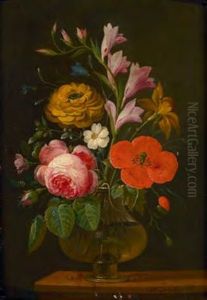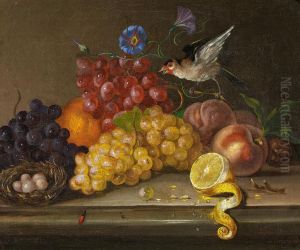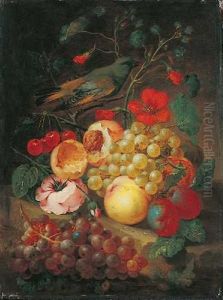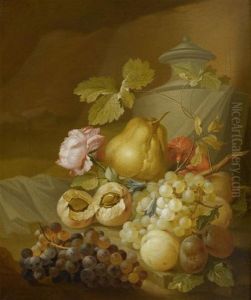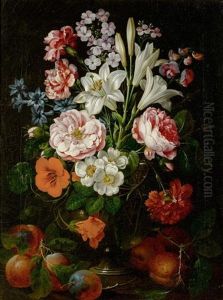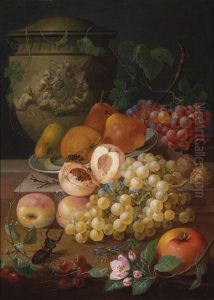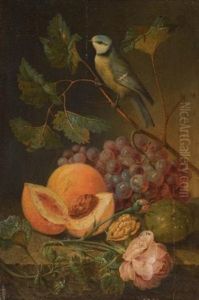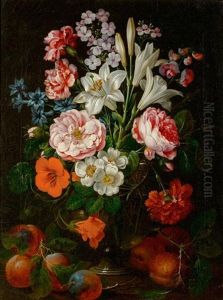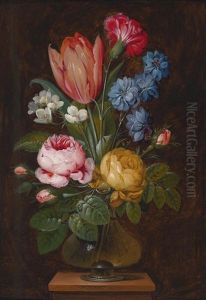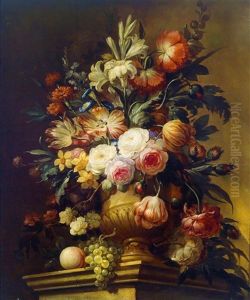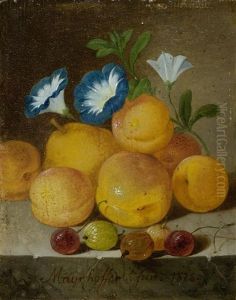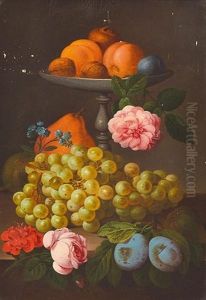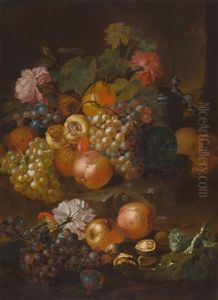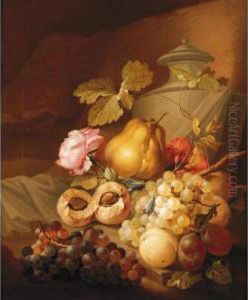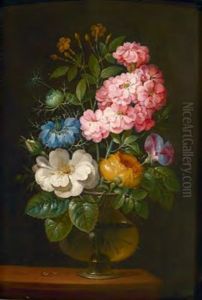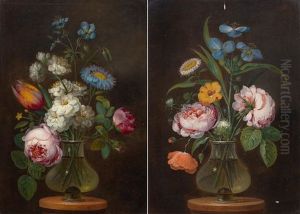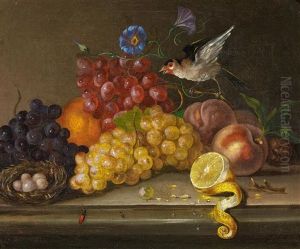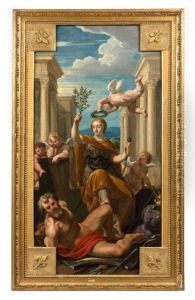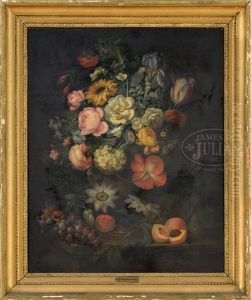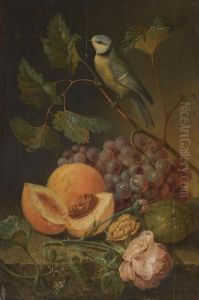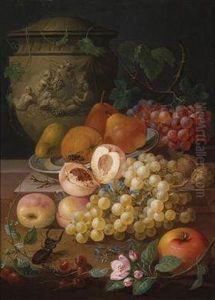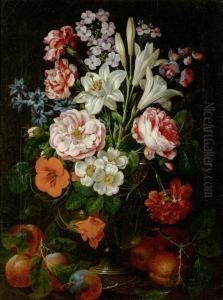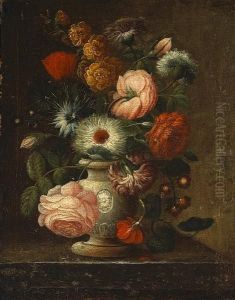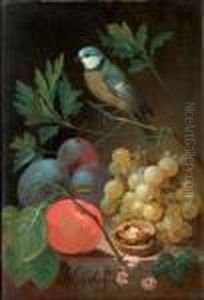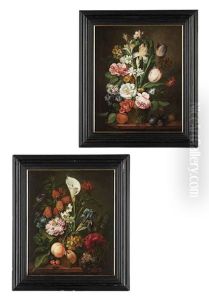Johann Nepomuk Mayrhofer Paintings
Johann Nepomuk Mayrhofer was an Austrian poet and an important figure in the German Romantic movement, but not primarily known as a visual artist. Born on May 14, 1787, in Steyr, Austria, Mayrhofer developed an intimate friendship with the composer Franz Schubert, and this relationship significantly influenced his contribution to the arts.
Although Mayrhofer initially studied law at the University of Vienna, his passion lay in poetry and literature. His career as a civil servant did not hinder his prolific writing, and he became deeply involved in Vienna's intellectual circles. Mayrhofer's poetry is marked by a sense of melancholy and preoccupation with themes of classical antiquity, nature, solitude, and mythology. These elements were characteristic of the Romantic era's preoccupation with emotion, introspection, and the glorification of the past.
Schubert and Mayrhofer met around 1814-1815, and their collaboration was both profound and productive. Schubert set more than 40 of Mayrhofer's poems to music, creating Lieder (German art songs) that are still widely performed and revered today. Among these settings are the famous 'Nacht und Träume' (Night and Dreams) and 'Einsamkeit' (Solitude). The partnership between the poet and the composer was a meeting of like-minded souls, with Mayrhofer's deeply felt texts complementing Schubert's emotive musical language.
Despite his success as a poet, Mayrhofer struggled with depression and loneliness throughout his life, and these struggles are often reflected in his work. He lived a relatively solitary existence and never married. Tragically, his life was cut short when he committed suicide on February 5, 1836, in Vienna.
Johann Nepomuk Mayrhofer's legacy, while not embodied in physical artworks, is immortalized through his impactful verse and its fusion with Schubert's musical genius. His contributions to the Lieder tradition have ensured his place in the annals of Romantic literature and music history. His poetry continues to be studied and admired for its depth, beauty, and the way it captures the spirit of its time.
